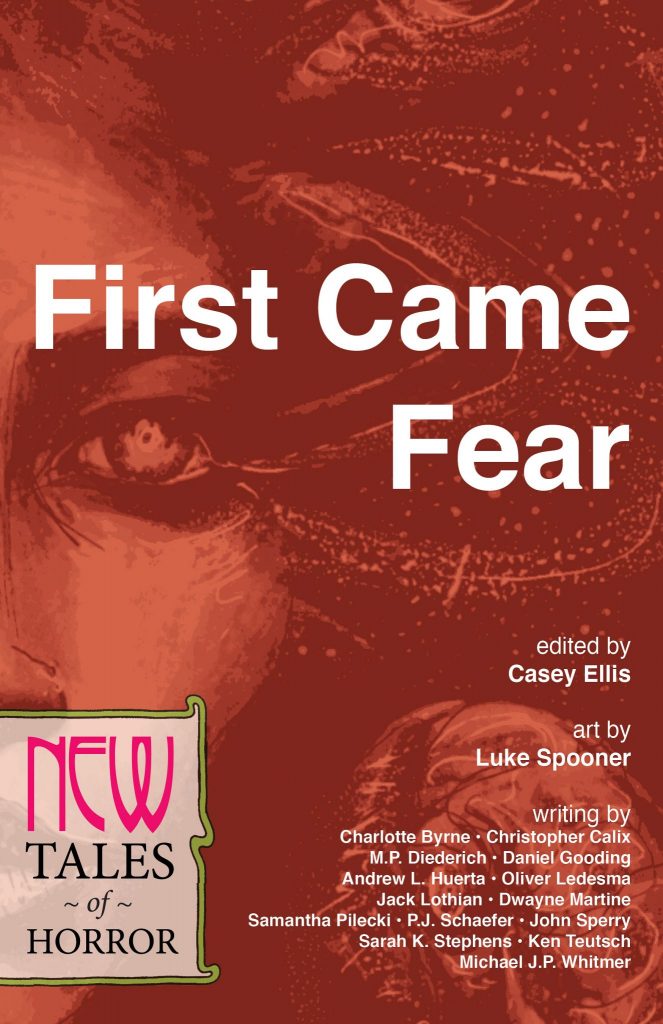By Jhon Sánchez
It’s Halloween, so it’s time to read some horror. On my night table rests the anthology First Came Fear, New Tales of Horror, edited by Casey Ellis and published by New Lit Salon Press. I decided to talk to the editor and a few of the writers featured in the book.
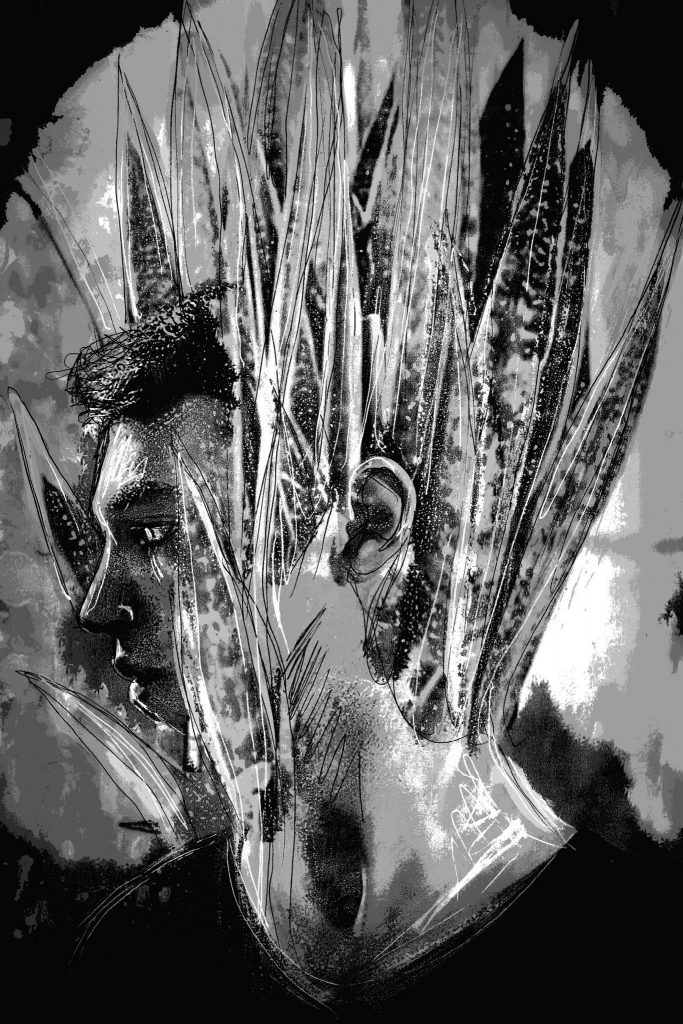
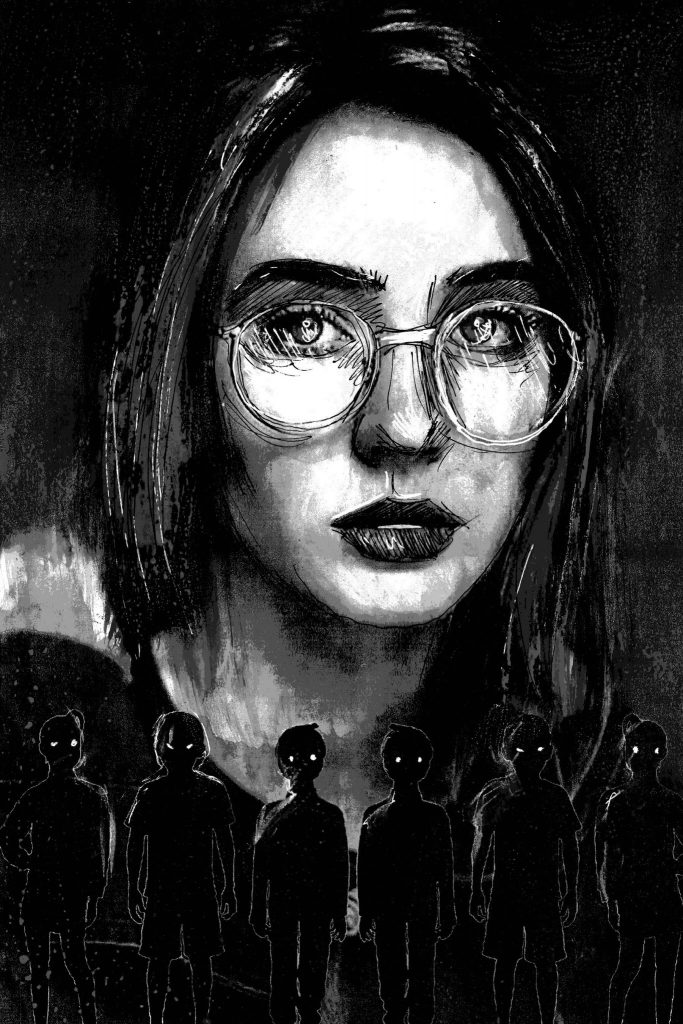
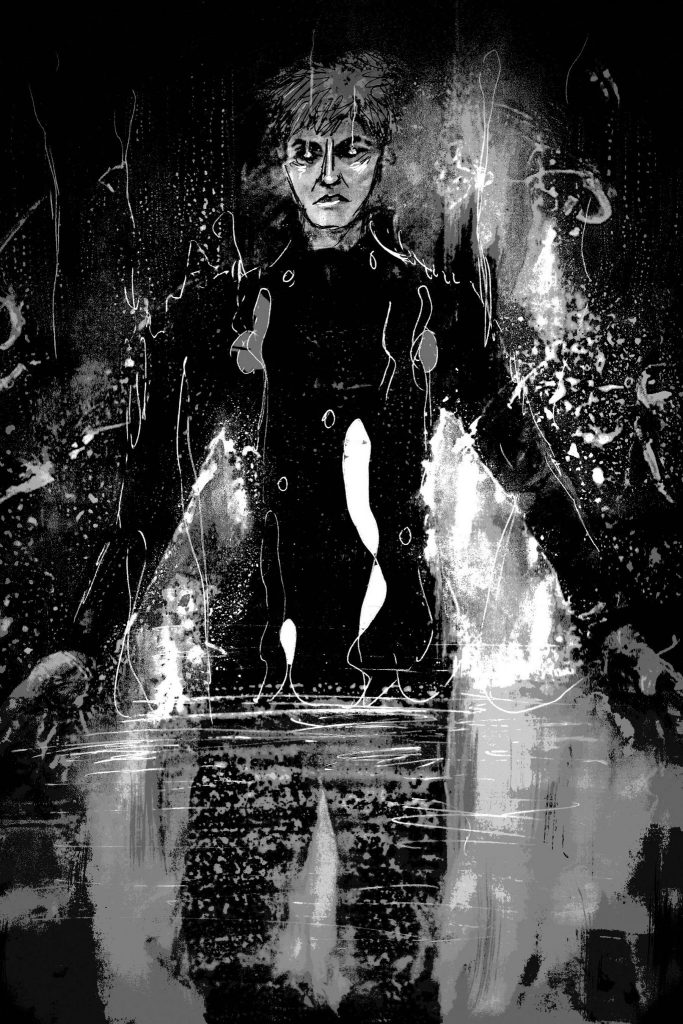
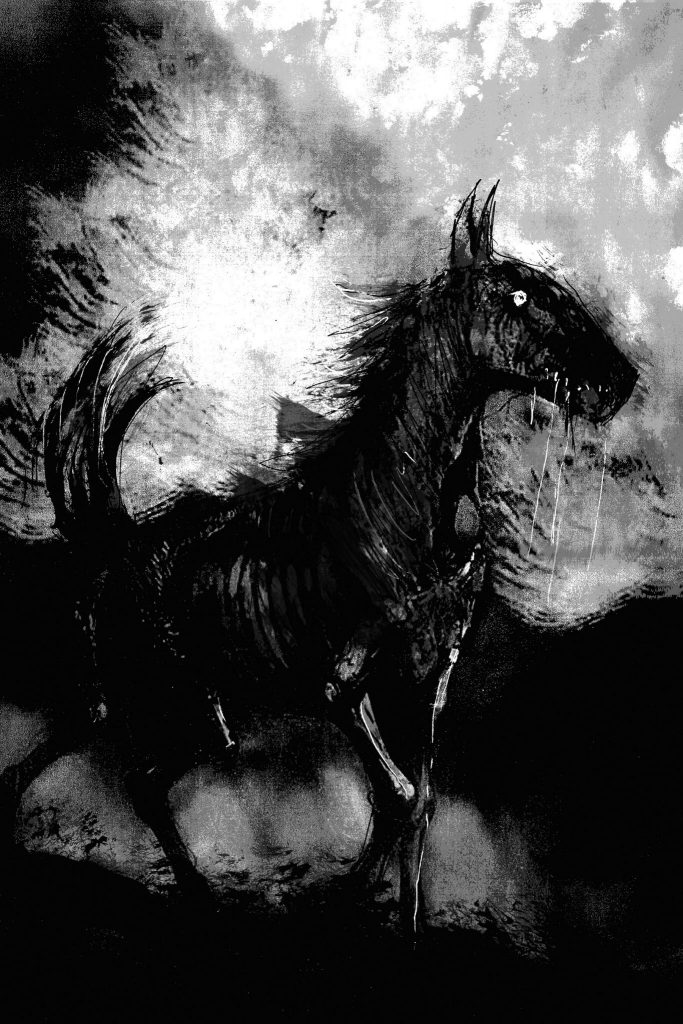
1. Casey, as the editor what makes this anthology special?
I think First Came Fear is somewhat unusual in the broad scope of horror it presents. Naturally there are single-author horror anthologies, and there are many wonderful collections devoted to one kind of horror (vampires, splatterpunk, etc.), but our book provides a different service. For horror fans, it’s a chance to read new voices in a wide variety of sub genres and styles. For newcomers, it’s a great look at what horror can do and a gateway to some incredible contemporary authors. In keeping with the principals of NLSP’s “New” series of anthologies, the stories are united in basic category, but wonderfully eclectic otherwise. Even the authors themselves, some of whom are longtime readers/writers of horror while others are dabbling in the genre for the first time, exemplify that concept. You never know what you’re going to get when you turn the page; the horror might be largely metaphorical or brutally visceral, reality-based or supernatural, and so on and so forth. I can’t think of a better way to jump in, or back, to the horror genre!
Why is it important to read horror in today’s society?
One reason is for pure enjoyment! Personally, I enjoyed horror long before I knew there was anything “more” to it. One point that’s often forgotten is just how much fun horror can be. Even at its darkest, there’s often a zesty joy to fear that I think is a deeply human emotion. I remember once attending a Halloween haunted house with friends. One of the performers, a young woman, seemed to be playing a lifeless corpse on the ground. All of the sudden she leaped up, causing us all to leap in the air. As we left, I noticed this ear-to-ear grin on her face, and it was the same grin we all had. However, on a deeper level, the kind of “fear” I just described is highly controlled, and in fact neutralized. We, as a species, need to do that to survive, and I think the horror genre is one of the most visible manifestations of that need. Many have asked why, with all the genuine horrors in the world, people would want to imagine fictional ones. It’s a fair question, but the fact is they do, over and over again. That is worth exploring and engaging with.
2. Daniel, your piece, called “Mother-in-Law’s Tongue,” is written in second person.
This was an interesting and effective choice. Why did you decide on this technique? Do you feel it makes the narration scarier? And out of curiosity, what does your mother-in-law think about the story?
I guess you could call it added seasoning; the story was already there, but I felt it needed a little something extra in the mix just to elevate it that little bit more—a similar process to when I’m making a stew and think: “I wonder what would happen if I chucked in a bit of paprika, or a couple of bay leaves?” I think out of all the genres horror is certainly the most visceral (no pun intended), and my aim with the second-person narrative was to give the reader that heightened level of fear which I think it manages to achieve, even down to describing the actual physical sensation of terror that the protagonist feels in that first supernatural encounter.
My mother-in-law hasn’t read the story yet—I know she has a sense of humour and appreciates a good yarn, but there’s just enough “based on true events” stuff in the story to make it potentially a bit awkward at the next family gathering…
3. Sarah, you are a psychologist and write mostly about family relations. What draws you to write horror? What would you say are the elements that make your story, “The Factory,” scary?
I believe the unease The Factory creates stems from its exploration of how a social norm—in this case, the devoted mother—can so easily shift into the terrifying. Parenting and pregnancy have been idealized in our culture for a long time, but with the advent of social media we’ve seen our cultural obsession with familial perfection take on its own level of pornography. I wanted to explode those conceptions in my story, because anyone working in my field has seen how common it is for families to struggle, and how that struggle can transform into harm. Parenthood is often ‘advertised’ as a fantasy, where parents are constantly affirmed of their worth through their interactions with their children, even during the difficult times. I think The Factory brings attention to how easily our wish to obtain that fantasy can be corrupted. It’s scary to acknowledge that within each of us is the potential to hurt another person, especially in relationships where unconditional love and care are socially expected. Pretending that this tension in familial life doesn’t exist does no one any good. To defeat the monster, you first need to admit that it exists—and this is what I tried to do in my story.
4. Samantha, you mentioned during a panel at the Jefferson Market Library that usually horror stories have a clear definition between good and evil, but in your story, “Roser and the Guide to the Inexplicable” these boundaries become blurred. Why is that? How did you achieve that effect?
In horror, the demarcation between good and bad is usually clear. Rule is, the good guys are the living, the flesh and blood we identify with. The bad guys are the undead. The ghosties. The monsters.
In “Roser…,” I broke that rule. My title character starts of lacking a sense of belonging, and, in the end, he finds it among the dead. Having experienced death in my life, I wanted to destroy the expectation that all ghosts are evil. Ghosts are (oops, were) people too, you know?
The ghosts in my story share Roser’s simple desire for a sense of belonging. They want to feel included and commune with the living.
I use italics a lot, first to give voice to Roser’s thoughts. Then I use the same technique to give voice to the ghosts, which helps to blurs the borders between living and dead, ‘good’ and ‘bad’ even further. But the ultimate trick of conveying this message was in the ending.
It would’ve been easy to end this story with the conventional jump-scare and have Roser meet a bloody demise. But the ghosts in this story collectively reject that. They’d rather have him visit again to share his experiences –his life.
Vampiritic, perhaps, but not gruesomely so. I wanted to express the idea that hanging around cemeteries and haunted reservoirs can be…comforting, at times.
5. M.P Diederich, I have read some of your stories before, and they are always funny, but I never thought you could include humor in a horror piece. “In Dressage for Beginners,” the dialogue is funny, the monster is funny and even the origin of the story is funny. Tell us about the relationship between humor and horror.
I’ve been asked this question a lot in relation to my story, which has actually come as a bit of a surprise to me. Personally, I’ve always found horror and humor to be inextricably linked. However, much of this feeling probably stems from my early exposure to dark humor in the Monty Python films and TV series, as well as the open mockery of horror and sci-fi films on Mystery Science Theatre 3000 (also a staple of my childhood family TV viewing). To me, the best horror, especially when it contains elements of the supernatural or the absurd, should at least acknowledge how ridiculous its horror elements are. It helps to disarm the reader, which can in turn make the truly horrific elements stand out all the more. The same thing goes for humor as well, helping the audience overcome their resistance to something that would normally frighten or repulse them by inviting laughter. I think this is a very natural, human response to discomfort: to diffuse the situation with a communal chuckle at its expense.
6. Luke, I love the illustrations. What challenges did you face in illustrating the stories?
The most challenging aspect of illustrating for the project, given the obvious theme of fear and horror, is that of making artwork that alludes to the horrific elements of each narrative while not completely draining them of effect. I think the honour of “the reveal” should be exclusively the author’s, it’s their story after all – so despite the temptation to jump in and sketch out the climactic scene of a story, or something I personally found shocking I had to constantly keep in mind that I’m just there to illuminate a little corner of each story and help grease the wheels on what the author sets into motion.
One of my best friends’ birthdays falls on Halloween. I know how to scare her now with “First Came Fear.”
For more information about the authors, please read their bios.
Casey Ellis grew up believing in ghosts. Few books read in childhood evoke warmer memories for him than “true” ghost stories. Casey soon learned that ghosts aren’t real, but horror movies and books could keep them alive. Today, Casey knows ghosts are as real as we want them to be.
Daniel Gooding was born in 1984. His short story “Crow Magnum Xix” is featured in the Startling Sci-Fi: New Tales of the Beyond anthology published by New Lit Salon Press, and he has also written for The Guardian website. He lives in Bath, United Kingdom with his wife and two children.
M.P. Diederich was born somewhere in New England in 1985. He studied English and Creative Writing at Fordham University while seriously considering joining the French Foreign Legion. He currently lives in Brooklyn with his wife and two small panthers.
Samantha Pilecki works as a librarian and therefore has typical librarian interests, namely caring for rats, collecting dead bugs, and smoking cigars. Her work has appeared in El Portal, The Fable Online, A Prick of the Spindle, Typehouse, and other literary magazines.
Luke Spooner a.k.a. ‘Carrion House’ and ‘Hoodwink House,’ currently lives and works in the South of England. Having graduated from the University of Portsmouth with a first-class degree he is now a full time illustrator and writer for just about any project that peaks his interest. Despite regular forays into children’s books and fairy tales, for which he has won awards for literary and artistic merit, his true love is anything macabre, melancholy or dark in nature and essence. He believes that the job of putting someone else’s words into a visual form, to accompany and support their text, is a massive responsibility as well as being something he truly treasures. Visit Luke at http://www.carrionhouse.com/.
Sarah K. Stephens is a developmental psychologist and a senior lecturer at Penn State University. Although Fall and Spring find her in the classroom, she remains a writer year-round. Her short stories and essays have appeared in LitHub, The Millions, National Book Critics Circle: Critical Mass, Five on the Fifth, The Indianola Review, and (parenthetical). Her debut novel, A Flash of Red, was released in December 2016 by Pandamoon Publishing.
Jhon Sánchez: A native of Colombia, Mr. Sánchez arrived to the United States seeking political asylum. Currently, a New York attorney, he’s a JD/MFA graduate. His most recent short stories published in 2018 are Pleasurable Death available on The Meadow, The I-V Therapy Coffee Shop of the 21st Century available on Bewildering Stories and “‘My Love, Ana,’—Tommy” available on https://www.fictionontheweb.co.uk/


